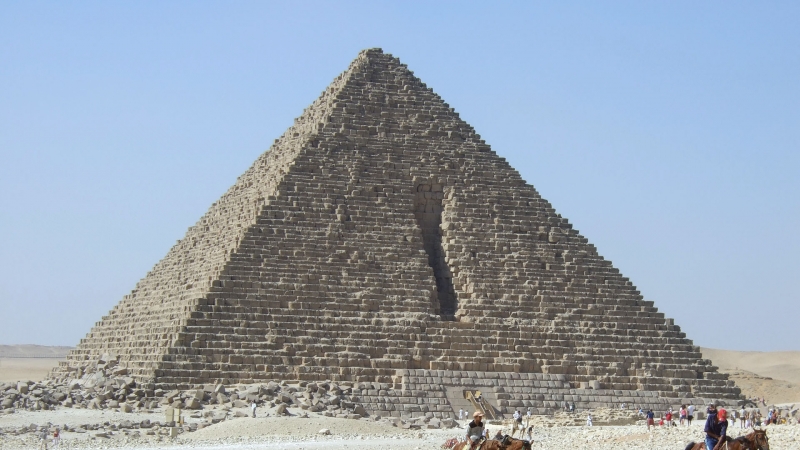NUBIA - WHERE THE NILE RIVER PRESERVES ARCHITECTURAL MASTERPIECES
Nubian architecture is a unique architectural style that developed in the Nubia region, located along the Nile River in southern Egypt and northern Sudan. The style is characterized by the use of local materials such as mud, fired bricks, and stone, as well as construction techniques adapted to the hot, dry climate of the region.
Nubia, one of the earliest civilizations in the Nile Valley north of Sudan and Egypt, is known for its long cultural heritage, which dates back to around 2000 BC. This is evidenced by the writings, artifacts and temples that reflect their development over time.
Additionally, Nubia's history is closely linked to that of ancient Egypt, including territorial disputes and competition for control of important trade routes. These relationships have created a complex picture of interaction and influence between the two lands throughout history.
The development of Nubia is not only part of their own history, but also part of the larger history of this land, playing an important role in the formation and development of civilization and culture in the Nile region.
Main features of Nubian architecture
Nubian architecture often uses local materials such as mud, fired bricks and stones are the most common building materials in Nubian architecture. These materials are locally available and are suitable for the hot and dry climate of the area. Mud is used to create walls, fired bricks are used to create domes and stones are used to build foundations and walls.

Most of the paintings and home decorations are based on religious meanings.
Nubian architecture is often decorated with geometric patterns and designs inspired by nature. These patterns can be painted on walls, carved into stone, or woven into fabric.
The Nubians’ introduction of color into architecture is a recent occurrence. Due to flooding from a reservoir, they were forced to relocate to new territories between Aswan, Egypt, and the Middle Upper Nile in Sudan, where they built 35,000 houses. The tribe retained traditional Nubian architectural features of dried mud bricks and domes, but added a lot of bright colors, symbols, and geometric patterns to the exterior of their homes.
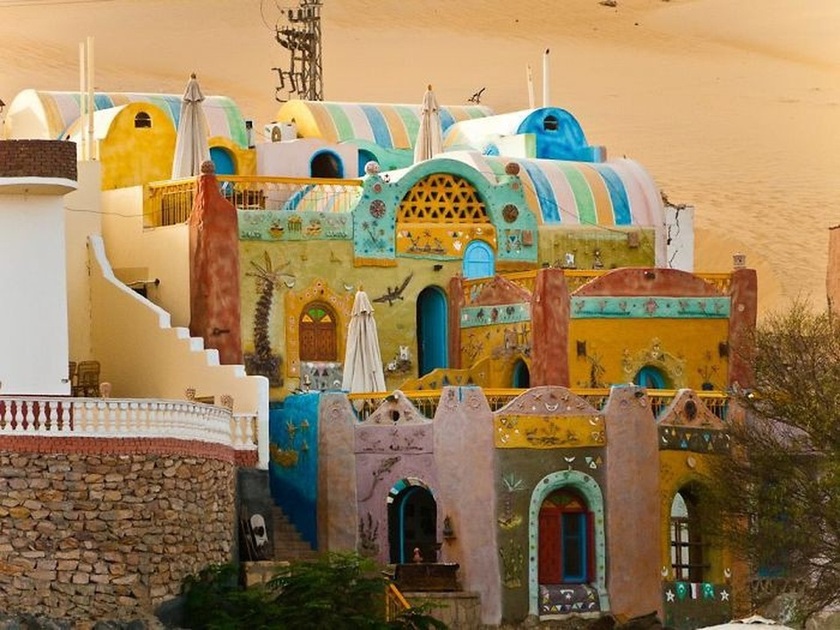
The architecture here is famous for its many colors.
Most of the paintings and decorations in the houses are based on religious meanings, such as the eye painted in frescoes depicting the hand of Fatima or the eye of the Prophet. Nubians believe that these symbols provide protection against evil forces and use colors to create protective shields. They also use floral motifs on the facades and some have contemporary elements such as trains, planes, cars and ships, giving a colorful and playful feel to the overall architecture.
Abu Simbel Temple - Masterpiece of Ancient Egyptian Architecture
When it comes to Nubian architecture, the famous Abu Simbel Temple must be mentioned. Abu Simbel Temple is a great architectural work located in southern Egypt, near the border with Sudan. Built by Pharaoh Ramesses II in the 13th century BC, this temple is a testament to the power and prosperity of ancient Egypt.
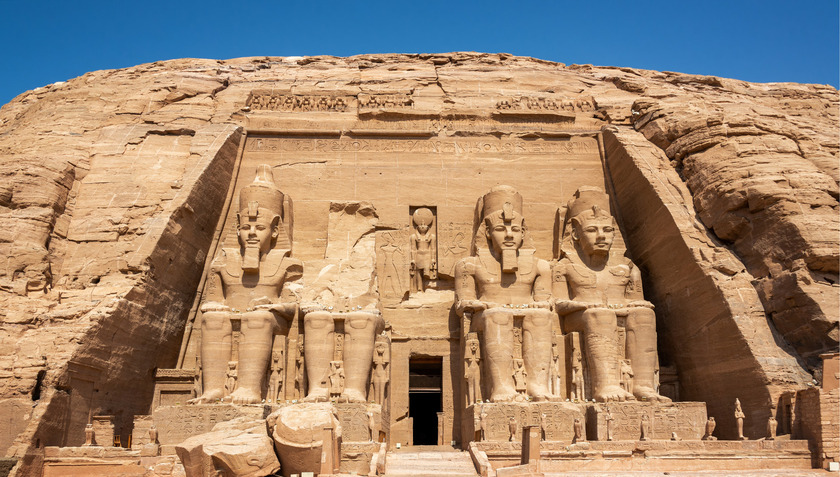
Nubian architecture is a unique architectural style that developed in the Nubia region.
The temple consists of a large temple and a small temple. The large temple is dedicated to Ramesses II and the gods Amun, Ra-Horakhty, and Ptah. The temple has four colossal statues of Ramesses II, each 20 meters (66 feet) tall, carved on the facade. Inside the temple are a series of rooms and halls decorated with murals and reliefs depicting the life and exploits of Ramesses II.
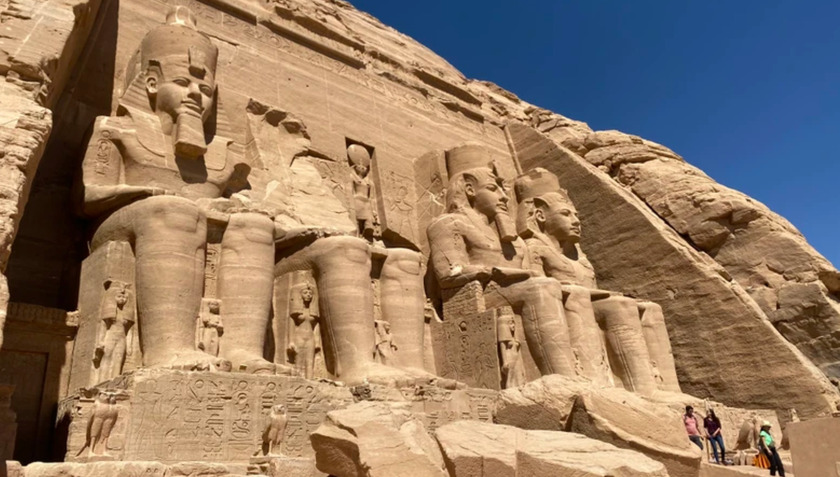
Abu Simbel Temple is a great architectural work located in southern Egypt.
The small temple was dedicated solely to Ramesses II's wife, Nefertari. It was smaller than the large temple, but it was still an impressive structure with beautiful statues, murals, and reliefs.
The Abu Simbel temples were originally built on the banks of the Nile. However, in the 1960s, due to the construction of the Aswan Dam, the Nile River rose and threatened to submerge the temples. In order to preserve this priceless cultural heritage, UNESCO undertook a dramatic relocation project. Both temples were cut into giant blocks of stone and moved to a location 64 meters (210 feet) higher than their original location.
The relocation project was completed in 1968 and the Abu Simbel temple is now a popular tourist destination. The temple is a testament to ancient Egyptian engineering and artistry, and a reminder of the power of humankind to preserve cultural heritage.
SOMALIAN ARCHITECTURE - UNIQUE FEATURE IN THE HOT DESERT
Somali architecture is a harmonious blend of long-standing traditions, local building techniques and influences from different cultures in the region. This architectural style is notable for its ability to adapt to the harsh hot and dry climate of the Horn of Africa, while also expressing the unique cultural identity of the Somali people.
Somali architecture exhibits a rich and diverse tradition of technique and design. Spanning the ancient, medieval and early modern periods in Greater Somalia, Somali architecture also incorporates contemporary Western designs.

Somali architecture involves many different types of buildings, such as: citadels, castles, citadels, fortresses, mosques, towers, megaliths, dolmens, stone circles, monuments, temples, aqueducts, and lighthouses.
Somali architecture typically uses building materials such as stone (the most common material due to its durability and resistance to harsh weather conditions), wood (often used for doors, windows, porches and decorative details), mud (used for plastering walls and creating domes).
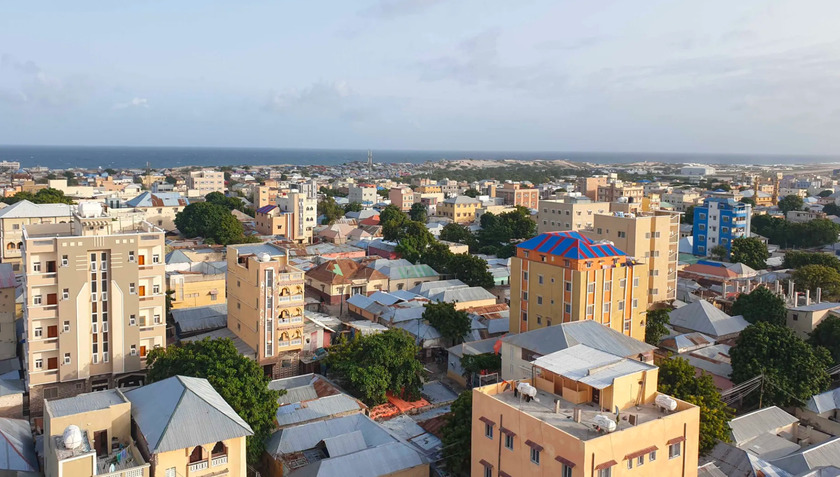
Somali architecture is a precious cultural heritage of the Somali people, demonstrating their creativity, adaptability and unique identity. This architectural style is a testament to the fusion of long-standing traditions and influences from different cultures, creating a unique and impressive beauty in the hot land of the Horn of Africa.
MADAGASCAR ARCHITECTURE - THE STRANGE OF THE WILD ISLAND
Madagascar architecture is a unique blend of influences from different cultures, including Africa, Asia and Europe, blended with the unique character of this wild island. This architectural style is characterized by its diversity, use of local materials and adaptation to Madagascar's unique environmental conditions.
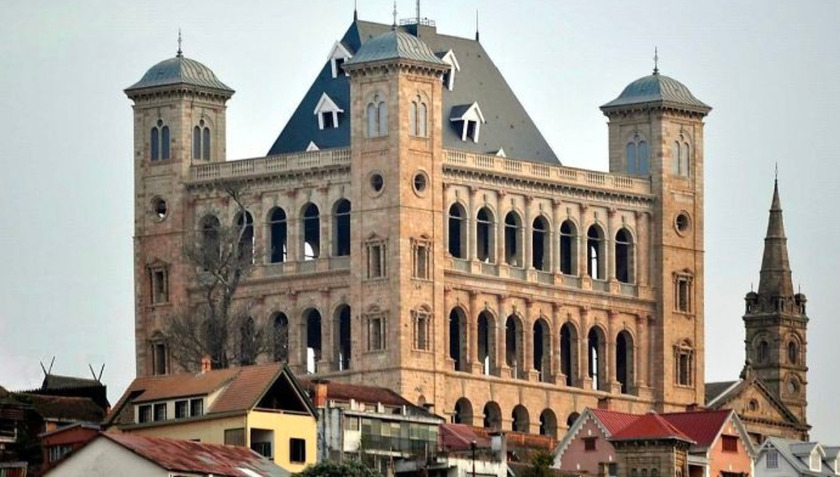
Madagascar architecture is a unique blend of influences from different cultures.
The architecture of Madagascar, a large island nation off the east coast of Africa, is unique on the continent. Madagascar architecture bears a strong resemblance to the building standards and methods of South Borneo, from which Madagascar's first inhabitants are believed to have migrated.
Throughout Madagascar and the Kalimantan region of Borneo, most traditional houses are rectangular rather than circular, and have sloping or steep roofs supported by a central pillar.
When it comes to architecture here, we are talking about the Rova Palace. This is the residence of the kings and queens of Madagascar in the past. The Rova Palace is usually built of stone and wood, has magnificent architecture and is decorated with many unique works of art.
Rova Palace, also known as Rova Antananarivo, is an important cultural and historical heritage site of Madagascar. Located on the highest hill in the capital city of Antananarivo, the palace served as the residence of Merina kings and queens for more than 350 years, from the 16th to the 19th centuries.

Architecture of Madagascar, a large island nation off the east coast of Africa
The Rova Palace is built of stone and wood, with a unique architecture that combines traditional Malagasy elements with European influences. The palace consists of several areas, including palaces, temples, mausoleums and gardens. It houses many precious artifacts such as jewelry, weapons, costumes and artworks, reflecting the rich culture and history of the Merina people.
The Rova Palace served as the political and cultural center of Madagascar during Merina rule. It was the site of important ceremonies, summits, and cultural events. However, the palace burned down in 1990 during political unrest.
Although most of the Rova Palace was destroyed, some structures have been preserved and are being restored. UNESCO recognized the Rova Palace as a World Heritage Site in 2005, and it is now a popular tourist destination that attracts visitors from all over the world.







